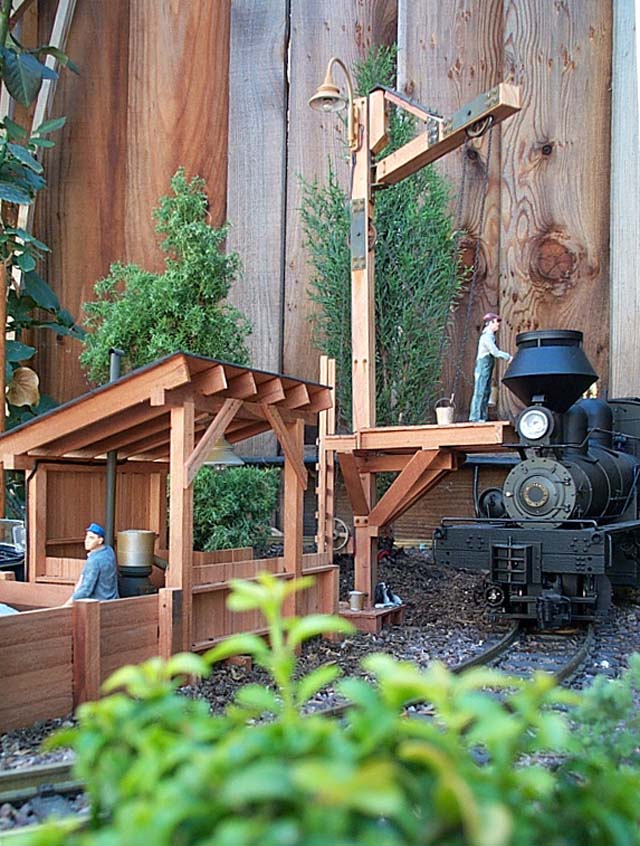
It's midday, and the crew of SCLCo No. 2 is refilling her sand dome after early morning rains
made the track particularly slippery.
Backwoods Sanding Facility
All locomotives need sand, and those belonging to the SCLCo are no exception. In fact, sand is critical to daily operations due to the steep grades on the line (typical of lumbering railroads), and the weight of the lumber loads being hauled. However, with only two locomotives to service, management wasn't about to invest in a sophisticated facility with a sand tower fed via compressed air. It was felt that things could be done "on the cheap" using a simple drying shed and crane - not to mention the backs of the railroad crews. Labor was cheap in the 30's and management's opinion was, "What the hell - we're paying them anyway. We might as well let them earn their keep!" As can be surmised, the SCLCo isn't at all "progressive" by today's standards. Still, when all is said and done, it's due in part to the rather miserly attitudes of the company's Owner & CEO that the company was successful, and was able to weather the depression and provide jobs when they were scarce elsewhere.
With the important decisions made by the powers that be, and the plan set forth, the crews went about building the necessary structures. Redwood lumber from the company's own sawmill was used to construct a simple lean-to drying shed with an attached sand bin, and equipped with a stove atop which sits a drying bucket created by the company blacksmith. Alongside the drying shed, the crews constructed a bucket crane with a platform that can be lowered to allow the train crew access to the sand domes of the locomotives.
So early each morning before dawn, and during the day as required, the locomotive crew stops alongside the bucket crane and lowers the platform. Pails are filled from the drying bucket and hauled up to the platform, where one of the train crew dumps the dried sand into the locomotive's sand dome.

It's midday, and the crew
of SCLCo
No. 2 is
refilling her sand dome after early morning rains
made the track particularly slippery.
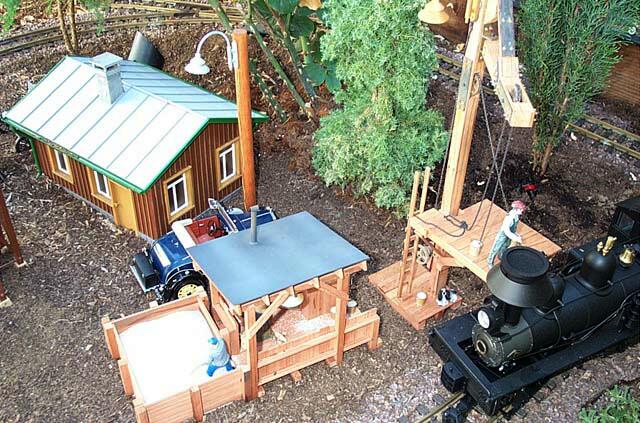
One of the lumberjacks took this shot from high up an adjacent
tree.
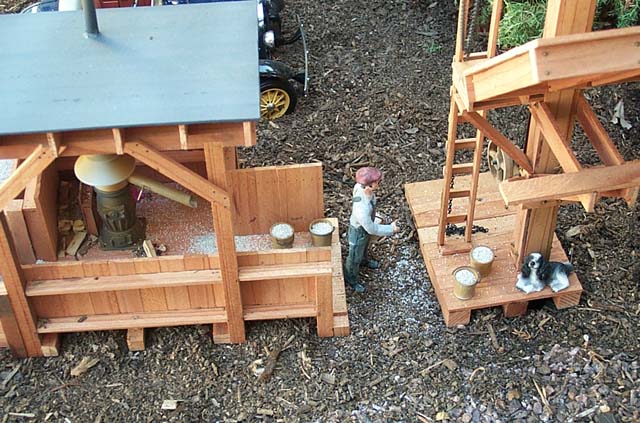
Activity around the bucket
crane has awakened Smokey. He belongs to No .2's Fireman,
and
when not riding in the cab, he likes to nap in the sun on the
bucket crane's lower platform.
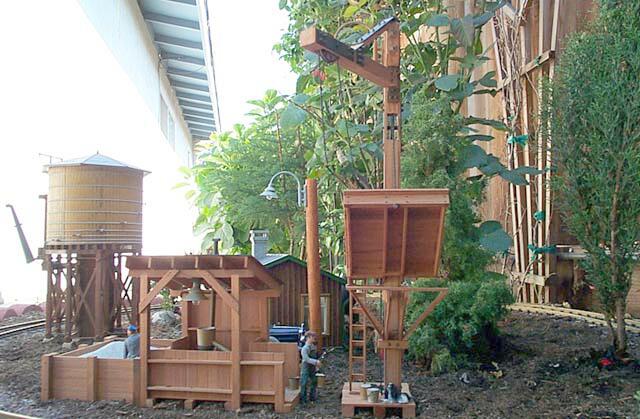
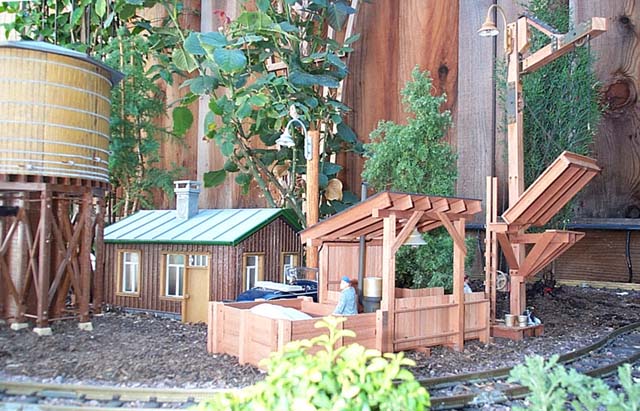
The models were scratch built of scale lumber sawn at home from a redwood 2x6. Both were built up board-by-board using Titebond II and Liquid Nails as adhesives. All boards have simulated nail heads where appropriate.
The inspiration for these structures came from an O-Scale kit by Sequoia Scale Models. I bought the kit and essentially scaled up the dimensions, changing a few things and adding structural components I thought necessary. I build to the scale of 1:20 where 0.05" = 1" and 0.6" = 1' - close enough to 1:20.3, where 0.591 = 1' and a lot simpler to work with.